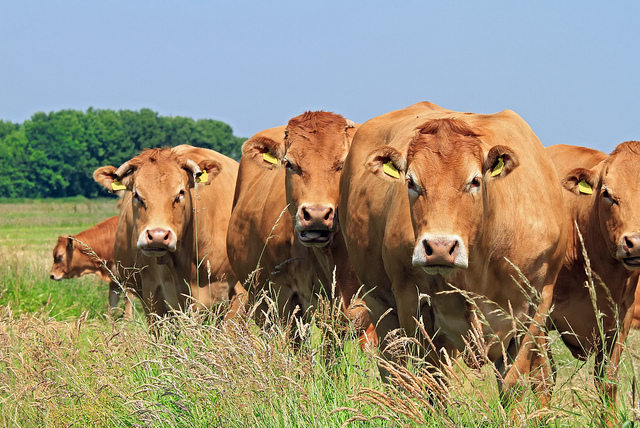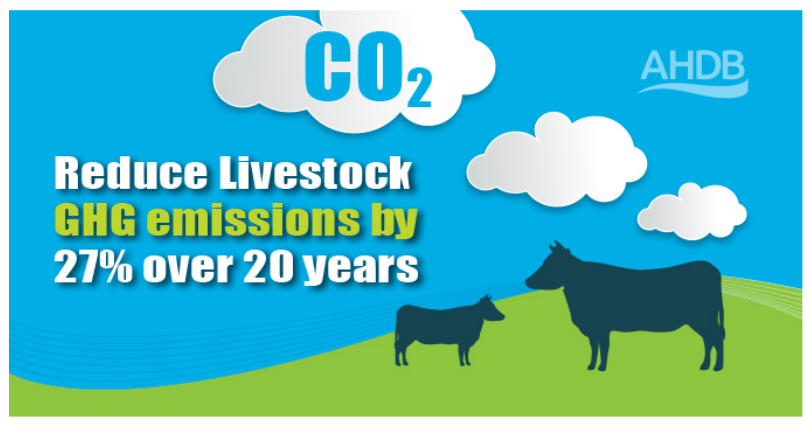



Cattle research project helps slash costs and farming emissions
Results from a UK research project shows that the beef industry's annual feed bills can be reduced by as much as £12.5 million over 20 years thanks to improved genetic selection that targets feed efficiency.
The tool, which was developed by the Beef Feed Efficiency Programme, will also enable the rate of reduction of beef-related greenhouse gas (GHG) emissions to be accelerated by 27% over a 20-year period (when compared with measures already in place).
The programme, which was established by the Agriculture and Horticulture Development Board (AHDB), the Department for Food, the Environment and Rural Affairs (Defra), Scotland’s Rural College (SRUC), the Scottish Government and ABP, studied Limousin and Angus store cattle to identify animals and sire groups that eat less than others but achieve the same growth rate.
The project has completed its first phase and has defined a number of Estimated Breeding Values (EBVs) for feed efficiency traits, along with a sub-index, which will enable beef farmers to select cattle for improved feed efficiency. Farming Minister, Victoria Prentis, said:
“This innovative programme for beef farmers is fantastic news, both as a cost-saving tool and for the environment, as it will help to reduce greenhouse gas emissions from the industry.
“As we move to a new system where we will reward farmers for the environmental benefits they deliver on their land, innovative approaches like these will be integral to profitable and sustainable food production, which work towards net zero farming emissions in the UK.”
Natalie Cormack, who manages the Beef Feed Efficiency Programme, also commented:
“We are excited to be delivering this cost-saving tool for beef farmers at this crucial time and, more importantly, to have identified the positive effect it will have on reducing GHG emissions for our industry.
“Reducing feed costs significantly, while maintaining other production parameters such as growth rate, is a game changer for the UK beef industry. We are now able to provide genetic selection information at breeder level that, when implemented, can achieve a clear reduction in feed costs.
“Animals that eat less while maintaining performance will also reduce their GHG production as well as needing less ground to sustain them. The programme therefore provides a solution to two key issues which are impacting our industry.”
In practical terms, the difference between the top and bottom 10% of Limousin animals measured was 1.93 kg of dry matter (DM) per head per day. The 10% of animals that had the lowest residual feed intake (RFI) (had a lower intake than expected) on average ate 1.93kg less DM of ration than the 10% of animals with the highest RFI (ie had a higher intake than expected).
For the finishing ration, there was a saving of 25 pence per day per animal for the lowest RFI group as opposed to the highest RFI group. If this sample is representative of all prime slaughtered beef cattle in the UK then, if scaled up, it would equate to a saving of about £61 million across all cattle finished over a 120-day period and a reduction of 13,000 hectares used for grazing and forage production across the industry.
Defra is funding the second phase of the programme, which will extend feed intake measurements and also study how increased feed efficiency relates to meat quality. An additional 1,500 cattle will be measured for meat quality, over the next three years, in conjunction with a small group of UK processors. Sarah Haire of Dunbia UK, who are supporting this work and are working with the project team to collect samples for meat quality analysis, said:
“We are very proud to be able to facilitate and support work in the next phase of the programme. There have been great findings from the first phase, and further work focussing on meat quality will give a complete view of the industry and importantly the quality of the product the consumer is getting. This will help provide farmers with more tools to increase efficiency at the same time as having a positive environmental impact and producing a quality product.”
Click here for more information about the project.





